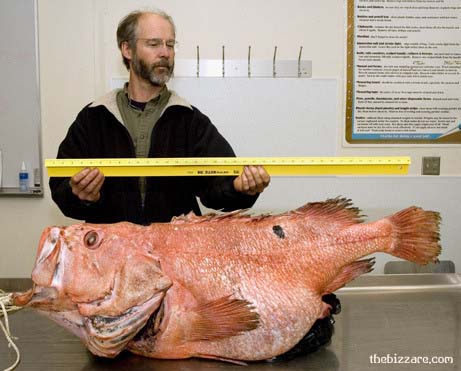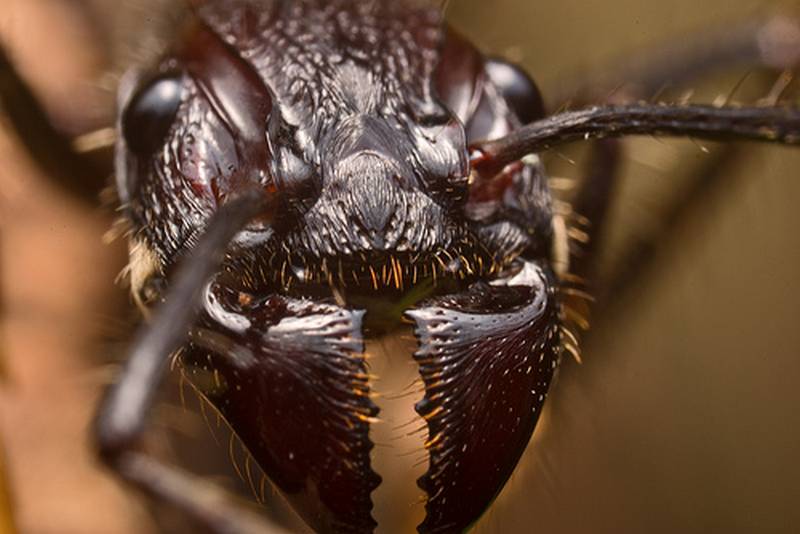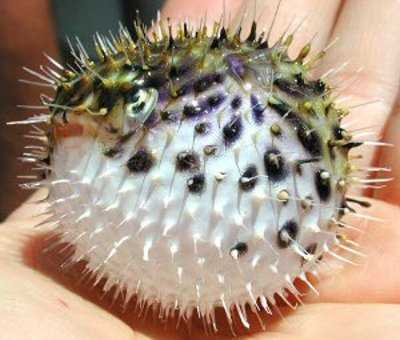Animals
Top 10 World Strange Creatures
You are here: Home / Animals / Top 10 World Strange Creatures
Top 10 World Strange Creatures
10. “Strange Owl” Seen in Wild for First Time
A tiny bird so rare and unusual that its scientific name means “strange owl” was spotted for the first time in the wild, scientists announced on March 22, 2007. Conservationists working in Peru got their first natural glimpse of the long-whiskered owlet in February 2007 while working in a private mountain reserve. The species wasn’t even known to exist until 1976, and since then the only known living specimens have been those caught in nets at night. “Seeing the long-whiskered owlet is a huge thrill,” said David Geale of Asociación Ecosistemas Andinos, who was part of the research team, in a press statement. The American Bird Conservancy, which partnered in the research, described the sighting as “a holy grail” of bird biology. As few as 250 of the owlets are thought to exist, scientists said, and the birds are as distinctive as they are rare. With their diminutive size, bright orange eyes, and wild, wispy facial feathers, the dainty birds belong to their own genus, dubbed Xenoglaux, or “strange owl.” The owlets owe much of their survival to the remoteness of their dense mountain habitat, the researchers said. But as human activity encroaches on Peru’s northern forests, the birds’ future looks dimmer. “Due to the rapid destruction of its forest habitat and its tiny range, it is inferred that the species is in serious decline,” Geale said. “Until recently, the owlets key habitat was completely unprotected.”
9.Ancient Tree Frog Found Encased in Amber
A miner from Mexico’s Chiapas state made the find of a lifetime—a tiny tree frog preserved in amber that could be 25 million years old—a scientist announced in February 2007 (map of Mexico).The block of amber, or fossilized tree resin, encasing the 0.4-inch (1-centimeter) frog was unearthed in 2005 and sold to a private collector, according to the Associated Press (AP). The collector then lent the piece—seen in a photo released on February 14—to scientists.
The specimen appears to belong to the genus Craugastor, said Gerardo Carbot, of the Chiapas Natural History and Ecology Institute, who has been studying the find. This genus includes many modern frogs native to Central America.
The frog’s age has yet to be authenticated. But it was recovered from earthen deposits dating back 25 million years to the Oligocene epoch, Carbot told the AP.
Carbot hopes to make the plot of Jurassic Park a reality by drilling a small hole into the amber and attempting to extract DNA from the encased animal.But “I don’t think [the stone’s owner] will allow it,” Carbot told the AP, “because it’s a very rare, unique piece.”
8.New Leopard Species Announced
It turns out a leopard really can change its spots—or at least its species. DNA tests have shown that Borneo’s top predator is one of a kind.
The clouded leopard of the Southeast Asian islands of Borneo and Sumatra is its own unique species, according to genetic test results announced March 14, 2007, by WWF, the international conservation organization (Indonesia map showing Borneo and Sumatra). Until now the cat was believed to be of the same species as the mainland clouded leopard.
The differences aren’t all in the genes, either—the two species have different fur patterns and skin coloration.
“It’s incredible that no one has ever noticed these differences,” said Andrew Kitchener, mammal and bird curator for National Museums Scotland, in a statement.
Weighing in at about 50 pounds (23 kilograms), the Bornean clouded leopard—as it’s being called—is the largest predator on Borneo and is second only to the Sumatran tiger on Sumatra. A hunter of lizards, monkeys, and small deer, the big cat has proportionately the longest canine teeth of any cat.
Many of the estimated 8,000 to 18,000 Bornean clouded leopards in existence inhabit a Kansas-size, mountainous rain forest called the Heart of Borneo.
“The fact that Borneo’s top predator is now considered a separate species,” said WWF’s Adam Tomasek in a statement, “further emphasizes the uniqueness of the island and the importance of conserving the Heart of Borneo.”
7.Jurassic “Crocodile” Found in Oregon
It endured a rocky ride—literally—but this ancient “sea monster” from Asia has found a place in the United States to call home. The fossil remains of a crocodile-like reptile called Thalattosuchia have been discovered in rocks in the Blue Mountains of eastern Oregon—about 5,000 miles (8,050 kilometers) from where it most likely died, researchers announced on March 19, 2007. So far about 50 percent of the animal, including the upper leg bone and rib fragments seen here (bottom), have been unearthed. “This creature lived in Jurassic times, so it’s 150 to 180 million years old,” retired University of Oregon geologist William Orr said in a press release. Orr provided expert advice to the excavation team. “It probably lived in an area from Japan to East Timor, somewhere in the western Pacific in a tropical estuarine environment.” The reptile, the oldest ever found in Oregon, is a rare discovery in North America. But similar fossils have been found throughout Southeast Asia, so experts believe that the remains were carried to the U.S. by plate tectonics. As the section of Earth’s crust containing the fossils moved eastward, the Pacific plate collided with the North American plate, pushing the bones into the mountains. The 6- to 8-foot-long (1.8- to 2.4-meter-long) creature, shown in an artist’s conception (top), is part of a group that scientists think represents an evolutionary transition for this line of crocodilians. Features from related fossils suggest that the animals were evolving from being semiaquatic to entirely ocean dwelling. The newfound fossils have been moved to the University of Iowa for further study before going on display at an Oregon museum.
6.Rare “Smiling” Bird Photographed in Colombia
Call him the Mona Lisa of the bird kingdom.
The rare recurve-billed bushbird, rediscovered by scientists in Colombia after a 40-year absence, sports a curving beak that gives the illusion of an enigmatic smile.
This photograph, taken by a conservationist with the Colombia-based nonprofit Fundación ProAves in 2005, is the first public photo of a live bushbird.
The elusive species had not been spotted between 1965 and 2004, due to its limited range and remote habitats. It was seen recently in Venezuela and in a region of northeastern Colombia, where it was photographed.
Researchers found the bird in a 250-acre (101-hectare) reserve next to the Torcoroma Holy Sanctuary near the Colombian town of Ocaña, where in 1709 locals claimed they saw the image of the Virgin Mary in a tree root. The forests of the sanctuary have been protected by Catholic Church authorities in the centuries since.
The researchers also found and photographed the extremely rare Perija parakeet, of which only 30 to 50 individuals likely survive.
Deforestation and wildfires for agriculture and grazing have denuded much of the birds’ habitat, conservationists say.
“[A]s more and more remote areas are being settled, the bushbird reminds us how important it is to conserve as much natural habitat as we can,” said Paul Salaman of the American Bird Conservancy.
“Who knows what wonderful biodiversity is being destroyed before it has had a chance to be discovered?”
5.Rare “Prehistoric” Goblin Shark Caught in Japan
A rare goblin shark—a “living fossil” that closely resembles ancient shark species—was caught alive on January 25, 2007, in Tokyo Bay, only to die within days.
Officials from the Tokyo Sea Life Park discovered the 4.3-foot-long (1.3-meter-long) creature during an expedition with local fishermen. The shark had been tangled in fishing nets 500 to 650 feet (150 to 200 meters) deep.
But the animal died on the morning of January 27 after being put on display for the public.
Little is known about the mysterious goblin shark, which normally stays near the bottom of the ocean.
“Dead goblin sharks are caught from time to time, but it is rarely seen alive,” a park official told the AFP news agency. “We were able to document the way the shark swims. After it died, we dissected the specimen for further studies.”
But the unusual find is giving scientists déjà vu. Earlier this month another deep-sea prehistoric shark had been found in Japan—a frilled shark spotted on January 21 that, like the goblin, died quickly in captivity.
4.Whopper”Giant Squid Washes Ashore in Australia
In the mystery surrounding one of the sea’s most elusive creatures, this body is more of a clue than a victim.
One of the largest giant squid ever found washed up on a beach in southern Australia on July 10, 2007, offering potentially crucial insights into the animal’s habits and habitat, scientists said.
The squid was discovered on a beach late at night on the western coast of Tasmania (see map of Australia.)
Biologists who inspected the squid said it weighed some 550 pounds (250 kilograms) and stretched 26 feet (8 meters) from head to tentacle—about as long as a school bus.
But the beast might have been even longer when it was alive, because the tentacles appeared to be badly damaged.
“It’s a whopper,” Genefor Walker-Smith, curator at the Tasmanian Museum, told the Reuters news service.
Another giant squid bearing similar injuries washed up on a Tasmanian beach in 2002. Scientists at the time suspected that the wounds were the result of a raucous sexual encounter, suggesting that giant squid may breed nearby.
There was no word on the cause of death of the newfound squid, but scientists have collected tissue samples to conduct DNA and other tests. The results could shed new light on an animal that is rarely seen outside the darkness of the deep.
A live giant squid was photographed for the first time in 2004, and another was captured and filmed a year later, both off the coast of Japan.
3.Century-Old Fish Caught in Alaska
A handful of Christians preparing rockfish as part of their traditional fish dinner this Good Friday might be feasting on one of the oldest creatures ever to live in Alaskan waters.
Commercial fishers in the Bering Sea hauled in the female shortraker rockfish seen above, which scientists say was between 90 and 115 years old, in March 2007. Researchers at the National Oceanic and Atmospheric Administration (NOAA) used growth rings in the fish’s ear bone, or otolith, to make their age estimate.
NOAA scientists also found that the fish’s advanced years had yet to take a toll on its reproductive abilities.
“The belly was large,” NOAA researcher Paul Spencer told the Associated Press. “The ovaries were full of developing embryos.”
A Seattle, Washington-based ship caught the 44-inch-long (112-centimeter-long), 60-pound (27-kilogram) fish while trawling for pollock at about 2,100 feet (640 meters) below the surface. The massive mama was among ten shortrakers pulled from the depths along with roughly 75 tons of the smaller commercially fished species.
The fish’s age and size both approach the maximum known limits for shortrakers. The largest on record measured 47 inches (119 centimeters) long, and the oldest ever caught was 157 years.
2.Croc Bites Off Hand
Kaohsiung, Taiwan, April 11, 2007—Armed and dangerous, a Nile crocodile prowls the Kaohsiung, Taiwan, zoo (top) on April 11, 2007. Veterinarian Chang Po-yu was reaching through iron bars to remove tranquilizer darts before treating the 440-pound (200-kilogram) reptile when the inadequately sedated animal bit the vet’s forearm off.
But for the vet, it wasn’t quite a farewell to arm.
After being shot at twice, but apparently unhit, the croc dropped the arm. After seven hours of surgery, doctors successfully reattached the appendage, shown at bottom on a smiling Chang on April 12.
The largest African crocodile species, the Nile croc may be threatened in some parts of its range, according to the World Conservation Union. The reptiles can reach 16 feet (5 meters) in length and are estimated to kill 200 people a year.
1.Colossal Squid Caught off Antarctica
In Antarctica’s Ross Sea, a fishing boat caught what is likely the world’s biggest known colossal squid (yes, that’s the species’ name), New Zealand officials announced February 22, 2007.
Heavier than even giant squid, colossal squid (Mesonychoteuthis hamiltoni) have eyes as wide as dinner plates and sharp hooks on some of their suckers. The new specimen weighs in at an estimated 990 pounds (450 kilograms).
The sea monster had become entangled while feeding on Patagonian toothfish (toothfish photos) caught on long lines of hooks. The crew then maneuvered the squid into a net and painstakingly hauled it aboard—a two-hour process.
The animal was frozen and placed in a massive freezer below decks. (The carcass was later shipped to Auckland University, where scientists pondered microwaving it for scientific analysis.)
“Even basic questions such as how large does this species grow to and how long does it live for are not yet known,” said New Zealand Fisheries Minister Jim Anderton in a statement.
The deep-sea species was first discovered in 1925, though the only evidence was two tentacles found in a sperm whale’s stomach. Since then there have been only a scattering of sightings, including a colossal squid caught in 2003 in the same region as the recent find.
The new specimen is likely the first intact male ever recovered, Anderton said.
Squid expert Steve O’Shea told local press, “I can assure you that this is going to draw phenomenal interest.”
For one thing, added the Auckland University of Technology professor, the squid would yield calamari rings the size of tractor tires.
(National Geographic)
Animals
Animal weddings from around the world
You are here: Home / Animals / Animal weddings from around the world
Animal weddings from around the world
Top hat and all… Puki the dog awaits his bride to be….
Frog Raja, left, didn’t wait around to be kissed by a princess…. Instead, he took the hand of his sweetheart Rani.
Giraffe couple Zagallo and Beija Ceu show affection towards each other after their wedding in Rio de Janeiro.
Monkey love… Jhumuri and Manu tied the knot infront of half the village.
It was a traditional chruch wedding for this great dane and her rather small husband….
Proud miniature pigs display their wedding certificates after their ceremony in Chongqing, southwestern China.
This catty couple look ‘purrrfect’ for each other as they tie the knot in matching pink outfits.
Two giant pandas tuck into their wedding cake having exchanged vows during a traditional Chinese wedding ceremony.
These loved up elephants can’t keep their trunks off each other.
Puppy love…. London’s Harrods was the choice of venue for this extravagant pair…..
…. And a quick get away for the honeymoon.
Animals
Horse Fight In China
You are here: Home / Animals / Horse Fight In China
Horse Fight In China
 Chinese spectators smile sadistically at the inhumane spectacle of two beautiful horses savagely attacking one another.
Chinese spectators smile sadistically at the inhumane spectacle of two beautiful horses savagely attacking one another.
With ears back, eyes rolling and nostrils flared in fury, the enraged horses pummel each other with their hooves and bite and head-butt each other in a horrifying fight, sometimes to the death.
Men, women and children watch, and a roar of approval goes up as one horse delivers the equivalent of a double-uppercut to its opponent with its hind legs.
The cruel “sport†of horse fighting has been outlawed almost worldwide, but it still thrives in countries like the Philippines, Indonesia, South Korea and here in China, as these disturbing images of a “tournament†prove.
Chinese spectators watch as two beautiful horses savagely attack one another
They were taken in Guizhou province in south-west China, where local people claim such events are a part of a 500-year-old tradition. The horses have been goaded to fury by their owners who urge them on as they hang on to halter ropes to prevent the horses running off.
All around wildly cheering crowds lay bets on which one will be standing when the fighting ends.
It goes on for half an hour or more, until one or the other collapses or is simply too exhausted to continue.
The Chinese government would prefer you not to see these pictures as it tries to clean up its image for the Beijing Olympics which are only eight months away.
Local people claim such events are a part of a 500-year-old tradition
But critics say horse fighting is as widespread as ever in the huge country’s far-flung provinces, especially among the Miao ethnic group.
Like bear-baiting and cruelty to circus animals, authorities say it is difficult to stop an event that is embedded in local culture, and frequently celebrated at festivals along with fireworks and fancy-dress dragon parades.
In outlying towns horse fights often take place in the main football stadium.
The stallions are driven into a frenzy by the simple ploy of leading them to a mare in heat, then taking her away when they are roused. Mares are often injected with hormones to keep them in heat longer. If they are still reluctant when the mare is removed, they are whipped, and gunshots are fired to stir them up.
A losing horse is often pitted against a much stronger opponent in its next fight to ensure it dies and the spectators get the bloody finale they enjoy. Then, according to reports from some of the remote regions, the dead horse is barbecued as part of the festival.
The cruel ’sport’ of horse fighting has been outlawed almost worldwide, but it still thrives in countries like the Philippines, Indonesia, South Korea and here in China
Vivian Farrell, who has waged a long campaign against the fighting as founder and president of the International Fund for Horses, said: “It is very hard to tackle. They say it’s a tradition. Well, it used to be a tradition to sacrifice children, but we’ve moved on from that.
“Sadly it is mostly driven by the Chinese love of gambling, although people get fired up over the blood, gore and intensity of the fighting.â€
She sees some hope for progress as China emerges more into the international community. “I get emails now from younger Chinese people saying they don’t like this image and asking what they can do.
“With the Olympics coming, young Chinese people want to be seen to be more humane. But it’s going to take a lot of education and a long time.â€
A spokeswoman for PETA ? People for the Ethical Treatment of Animals ? who are campaigning for a worldwide ban on the fights, said: “Torturing these magnificent animals in the name of entertainment is deplorable. Tradition never justifies cruelty and has no place in a civilised society.â€
Animals
Glass Bone Skeletons
You are here: Home / Animals / Glass Bone Skeletons
Glass Bone Skeletons
melli ink editions’ at cramer + cramer

ganz unverhofft’, 2008
melli ink editions
cramer + cramer, geneva september 19 – november 7, 2008
melli ink is a zurich based artist who explores nature in her work by transforming bone into glass. her artwork consists of life size skeletons and bones recreated in glass. ink began her career as a set-designer and also worked as a performance and video artist. the show will be held at cramer + cramer, who’s founder philippe cramer studied with melli ink at parsons school of design over 15 years ago. the two are currently collaborating on a project that merges their disciplines together. the special edition should be ready by early 2009.
http://www.melli-ink.com http://www.philippecramer.com







Animals
Most Painful Animal Bite
You are here: Home / Animals / Most Painful Animal Bite
Most Painful Animal Bite
‘Becoming a man’ in the Setere-Mawe society means intentionally letting yourself get stung by these ants. Not just by one but by hundreds of them at once. And not just on one occasion. There, you are not a man until you have done this ritual twenty times.
Twenty times wearing a pair of gloves each laced with hundreds of live bullet ants, stingers pointing inward, for ten minutes at each go. At first it seems like a horrible practice almost on the level of honor killings, but the boys themselves really seem to have a positive outlook on it. And in America, kids cry when daddy gets them the wrong color car for their sixteenth birthday.
Click on images to enlarge!
The Most Painful Animal Bite on Earth
The Setere-Mawe people of Brazil have found something really bad.
Meet the bullet ant. So named because those unfortunate enough to have been stung by one compare it to a gunshot wound – very unfortunate people; apparently, they have also all been shot. It reportedly has the most painful sting of any insect on Earth.
Animals
Seven of the Deadliest Delicacies
You are here: Home / Animals / Seven of the Deadliest Delicacies
Seven of the Deadliest Delicacies
Poisonous or dangerous food is considered a special delicacy by some cultures in several parts of the world. In most cases, a nice feast may turn into a deadly game of Russian roulette.
1):-“Fugu” or Pufferfish
This goes on top of my list as the world’s deadliest delicacy. Even a drop of toxin from a Pufferfish or Fugu (in Japanese) can immediately leave you paralyzed, followed by death.
Fugu is considered an authentic Japanese delicacy and it would take years for a chef to master the art of preparing the dish. The toxin, called tetrodotoxin is concentrated in the roe, ovaries and the liver of the fish.
2):-“San Nak Ji” or Live Octopus
A slight error during the removal of the toxic parts can allow the toxin to contaminate the entire flesh of the fish. Despite the risk of eating Fugu, it is reported that yearly,there are dozens of death from Fugu poisoning in Japan.
“San Nak Ji†or live octopus is a popular delicacy in Korea and Japan. The enjoyment of eating this food is when the octopus is still moving with the tentacles sticking to the roof of the mouth. The challenge is to munch and swallow the live octopus without choking. It is reported that there are on average of 6 deaths due to choking (on live octopus), each year in South Korea. 3);-Cassava
This is one of the world’s popular staple food. Cassava is often used to make the tropical delicacy in the form of tapioca starch or flour. However, if not properly washed or cooked, cassava leaves and roots contain toxin called cyanide which is fatal to humans even in small doses.
4):-Giant Bullfrog
Giant bullfrog is considered a delicacy in Namibia. The Namibians eat the entire giant bullfrog except for the internal organs. In most cultures, only certain body parts of the frogs such as the legs are consumed as most frogs have poisonous skin and poisonous internal organs. A premature bullfrog is said to contain a certain toxin which could lead to kidney failure in most cases. 5):-Ackee Fruit
Ackee plant is originated from West Africa. Later, it was introduced to Florida, USA.
The fruit looks like a pear, red in color when it’s ripe. The ackee fruit must be picked after it has naturally opened and revealed the seeds. The fruit must be eaten at the right time. The fruit is poisonous if it is both immature and overripe. The fleshy part around the seeds is the only part which is edible. The rest of the fruit contain a type of toxin called hypoglycin which can be fatal if consumed. 6):-Silver-Stripe Blaasop
The silver-stripe blaasop is a delicacy among the locals who live in some parts of the Indian Ocean.The locals are experts in removing the toxic parts of the fish before cooking and consuming it. The poison is concentrated in the liver,reproductive organs and also the skin of the fish which can cause paralysis and breathing problems if consumed by humans.Somehow, the silver-stripe blaasop made its way to the eastern Mediterranean waters. In early 2007, there are about 10 reported deaths relating to the poisoning of the fish which include 8 in Egypt and 2 in Israel. 7):-Echizen Jellyfish
The giant Echizen jellyfish is a huge, poisonous jellyfish which moves in swarms in the Japan waters. The jellyfish lives on tuna fish and this poses a problem as the tuna supply is affected by the huge consumption. So, the solution is to catch the jellyfish and turn it into a delicacy.
Like “Fugu†the tricky part lies in the preparation of the dish. The toxic parts must be removed and the jellyfish must be properly cooked for safe consumption.
Animals
7 role models from the animal world
You are here: Home / Animals / 7 role models from the animal world
7 role models from the animal world
The shallowness of the world can bring discouragement and frustration to many. Not succeeding or just finding it difficult to have a purpose in life can easily bring you down. You’re looking for ideas. Most role models prove to be exactly the opposite of what they claim to be, so where is the key? Maybe looking just a little further may give you the necessary impulse. Discover new values within yourself!
1. ELEPHANT

Elephants are known to live in groups which are lead by an elder female. The babies are practically raised together with no discrimination and if one of them hurts his or her leg for example the whole group will walk slower with no complaints. Elephant families are also famous for adopting lost or orphan babies and especially for returning to their old cemeteries.
Family- Most of us consider it to be the most important value of all but not everyone actually takes this idea further. A stressful, time-consuming job, some new prospects, the lack of time, the competition… Family life has changed in the last years quite dramatically especially in the powerfully industrialized cities. Many young people even refuse to start their own family for the reasons mentioned above. But is it all worth the effort? Neglecting your family can have severe effects for everyone involved especially from a psychological point of view. With a little respect, affection and…time just for a short visit or a phone call you can get rid of depression, loneliness and sadness also bringing joy to the ones you care about. Also married people are known to live more and they are more likely to have a stable life. Give it a second thought! It’s not necessarily about legalizing but about offering and receiving affection!
2. DOG
Dogs can create remarkable bonds with their human masters which seem to pass beyond the instinct limit as many times dogs endangered their lives to save someone. There are numerous cases when faithful dogs returned to their owners after traveling hundreds and hundreds of miles or when the death of the master meant the end of the animal as well.
Friendship-next to family is considered one of the most important elements in one’s life as these relationships influence practically every life aspect: spare time, work, way of thinking, the choices to make. Investing in friendship is highly beneficial, of course when the other person does just the same. A lasting friendship brings the best out of someone as it involves deep affection, the unique opportunity to confide without a care, to receive advice from another point of view and also to feel safe and relaxed. Many people all around the world claim to feel alone most of the time but this happens ion most cases because today’s lifestyle can easily affect one’s social skills and even desire to bond. However, investing in what you have or just discovering the ones around you will bring you more benefits than just some time spent in front of the PC.
3. ALBATROSS
The albatross is a sea bird which is known to live as much as 50 years which is remarkable for a bird. But what is the most remarkable is the fact that these birds are monogamous which made them a symbol for sailors traveling far away.
Fidelity- a subject all like to joke about but few actually prefer to take it seriously. We’ve all heard stories from the tragic ones to the most hilarious but the reality behind them may not be as entertaining. Usually in these situations this is a sign that the couple has a serious problem which is definitely not solved the right way. Infidelity is a source of distress for everyone involved leading to negative psychological effects such as guilt, underestimating, frustration, lack of confidence in anyone, adaptation problems. It’s always been there and will probably never disappear. However, putting fidelity behind a glass and calling it unreachable is not where we want to be.
4. PUFFIN
Puffins are sea birds which lay their eggs on cliffs in order not to be eaten by predators. However, when the babies hatch they prepare for a long journey to the beach. When the time comes to follow their parents, they jump from a remarkable height, most of them arriving safe on the beach.
Courage- Desiring is human…but daring? Taking a decision, most of the times risky, is something many would not rather do. Asking for a raise, leaving home for a college abroad, talking about your feelings- not easy. But the torment of deciding what to do is nothing compared to the regret of missing a once in a lifetime opportunity because of fear. We hear of people who could have done so much and so well but were afraid, everyday. The ones who take the tough decisions are on the front page of the newspapers. So when you truly have a feeling that this may be the right decision, analyze the situation (making quick decisions without thinking is not the best thing to do) take a deep breath and go for it. It may be the right thing.
5. SALMON
Salmons travel thousands and thousands of miles to get to the rivers they began their lives in. Many never reach their goal, but the ones who do offer the new generation the chance to make the same journey.
Perseverance- Once you’ve made the decision don’t give up on it immediately because of a reason or another! People giving up is a problem maybe not many take into consideration when they should. Many things, some very important remain unfinished just because giving up seems a very attractive alternative. Continuous effort is however the key in many cases as luck rarely strikes. Leaving behind the idea, value or impulse is what causes these things to happen. A few difficulties, some bad comments and it’s hard to go on. And still what if others gave up on their dreams or plans? Would the world still be the same now? Of course, being a Don Quixote is something totally undesirable. Be sure that it’s worth fighting for!
6. Wolf
Wolves are strong and resistant animals, being able to hunt various types of prey. However, a wolf knows that hunting in packs is the key towards reaching a bigger lunch. When hunting together, wolves can even kill a 500 kilo-moose, which is 10 times bigger than any of them and capable of putting tremendous fight.
Teamwork – Trusting your own powers and involving in various activities is something everyone is recommended to do. But only to rely on yourself may not be the best solution. More heads means more ideas. Of course, it’s normal to want to achieve glory and maximum of results by yourself; however, history was rarely changed by just a person, there were definitely others by his or her side. Jealousy can also be there. Still, working like this will show you that you cannot be the best at everything but that collective effort is the key to the problem. So, work with others to achieve a goal, share ideas, give a hand! The results will worth making a change. But teamwork is not just about work and school, it is about your spare time too: socialize, interact, be part of a group! What would sports be without it? Or how would any humanitarian action be successful? Maybe there is some truth in those old sayings…
7. Golden-fronted Bowerbird
One of the most impressing mating rituals belongs to a species of birds from the rain forest and concerns a special care for beauty, called the Golden-fronted Bowerbird. Every male builds some kind of presentation tent where he puts all the beautiful things he can find especially blue things and arranges them so that they will attract a female. The ladies come, analyze what they see and many times are not satisfied so that the males have to start working again until it’s perfect.
Beauty- it fascinates each and every one of us, we have to admit it. Finding and admiring the real beauty can be one of the most amazing things to do. The beauty is everywhere, in nature, in the people around us, in our homes. Becoming more attentive to details, having higher standards, improving the way you see the world is what you should do. Beauty is not a shallow value as long as it is appreciated correctly. Find the beauty around you and enjoy it, learn to smile at all the small things around you like a walk in the evening while the sun sets.
Animals react the way their instinct and senses dictate and still prove to be remarkable role models. Finding the right value in them and using it in real life is what makes people remarkable.




































